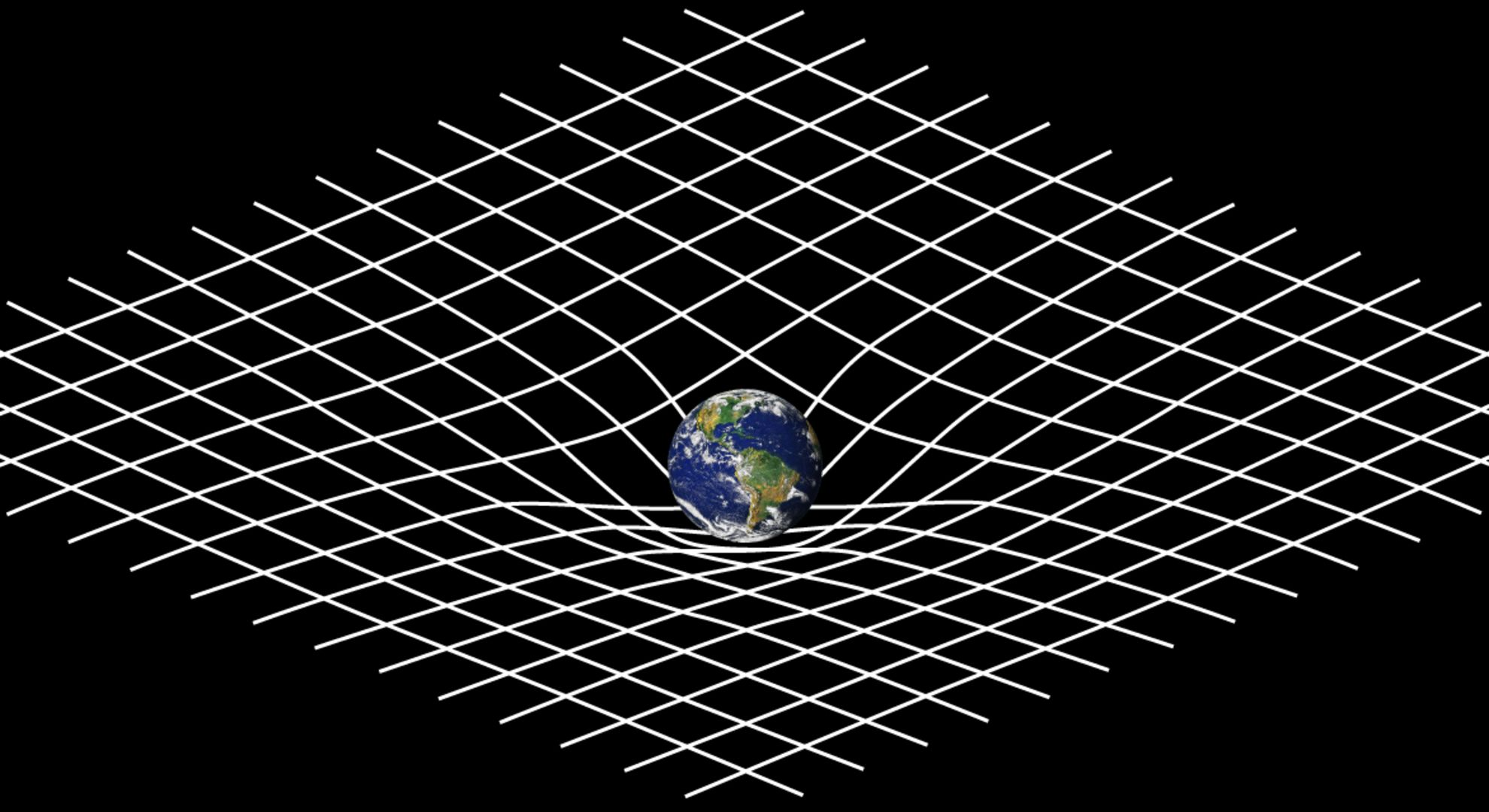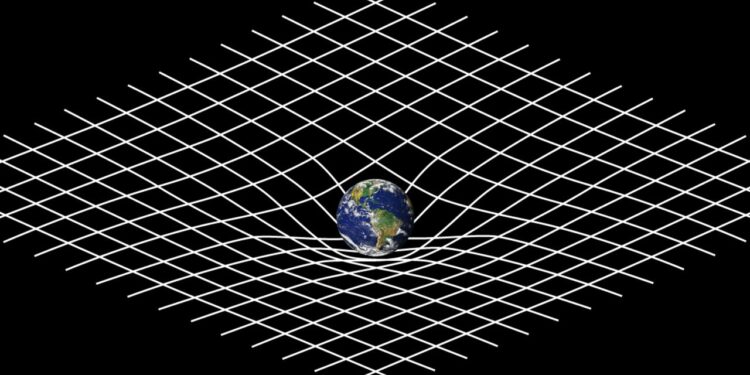
A new discovery suggests gravitational fields can enable matter to become quantum entangled — and that’s even if the concept of quantum gravity does not exist. The idea comes from two London-based physicists who are challenging the way we think about quantum fields and how classical gravity operates.
The search for quantum gravity is the next big step in physics, as researchers seek to unify the physics of the very small with that of the very large. Quantum mechanics explains the former while general relativity theory — which famously describes how gravity works — explains the latter. Both quantum physics and the theory of general relativity were products of the first quarter of the 20th century, but 100 years later, scientists are still none the wiser as to how the two can be unified. As it stands, the theories contradict one another.
In fact, new findings from Joseph Aziz and Richard Howl of Royal Holloway, University of London, could certainly complicate matters. Their work builds on the back of a thought experiment first proposed by famed physicist Richard Feynman in 1957, which would involve placing an object — say, an apple — into quantum superposition.
To understand superposition, think of the properties that make up a particle’s quantum state, such as its position, momentum, charge or quantum spin. The value of each of these properties is probabilistic in nature, and this distribution of probabilities is described by a wave, with the peak of the wave representing the greatest probability. Superposition is shown when wave functions for different outcomes overlap each other.
Feynman’s thought experiment would place the position of that hypothetical apple into superposition — in other words, it would exist simultaneously in two locations until it is observed. Once observed, its wave function collapses. A second apple would then be introduced in Feynman’s experiment, and if the first apple in quantum superposition interacted gravitationally with the second object even though the first apple’s superposition state collapsed, Feynman decreed that this would then be a sign of quantum gravity at work.
“When Feynman proposed this idea that you could, in principle, place a mass into superposition in two locations and then see if its gravitational field is also in quantum superposition, he believed that it would mean that gravity is quantum,” Howl told Space.com.
Modern treatments of this thought experiment explain the coupling between the two objects as them becoming quantum entangled. This means the quantum properties of the objects become inextricably linked to each other to the point that a change to one will initiate a change in the other — no matter how far apart they are. Albert Einstein referred to quantum entanglement as “spooky action at a distance.”
However, Aziz and Howl have now shown that the entanglement could take place even without quantum gravity.
A big contradiction
Einstein described gravity as being the curvature of spacetime (the four-dimensional unification of space and time). Yet, there’s an issue when it comes to quantum physics.
In quantum physics, the fundamental forces are divided up into discrete packets of energy called quanta. For example, a quantum of the electromagnetic force is a photon. In a <em>quantum description of gravity, the gravitational force must therefore also have its own quanta, and these have been called gravitons. Nobody has ever seen a graviton, however, because the chances of an individual graviton interacting with a detector are exceptionally low.
Furthermore, in quantum gravity, the entanglement of gravitational fields would be mediated by “virtual gravitons.” These would not really exist, hence being described as “virtual,” — but in the wacky world of quantum physics, particles that don’t exist are allowed for very brief amounts of time.
Howl and Aziz showed that if gravity is not quantum, it can still become entangled with matter that itself can be described according to quantum field theory. The classical gravitational field interacts with the quantum field of the matter that makes up the two objects, and this quasi-entanglement is mediated by virtual particles. Basically, Aziz and Howl pictured virtual atoms.
“Generally it has been considered that for the gravitational interaction to entangle, you need the gravitational field to be quantum mechanical so that it can be in quantum superposition,” said Howl. “What we’ve tried to argue is that you could think about the gravitational interaction as more general than just the mediation of the gravitational field, and there could be quantum processes associated with it, virtual matter processes, and in that case even if the gravitational field is classical the gravitational interaction could still potentially entangle matter.”
Howl says his work with Aziz does not rule out quantum gravity, nor does it mean that quantum gravity would be impossible to distinguish from this quasi-entanglement. Their findings suggest that the effect of classical gravity entangling matter is much smaller than if gravity were quantum.
“If you see the effects at a strong scale then you know it’s quantum gravity,” said Howl.
These effects manifest as correlations between particles or objects. For example, imagine you had a particle with a quantum spin of 1/2 (described as “up”) and another particle with a quantum spin of –1/2 (described as “down”), and these two particles were in a state of quantum entanglement with each other. A strong correlation means that if you know the spin of one of the particles is up, then you automatically know that the spin of the other particle is down without having to measure it.
On the other hand, in the classical gravity case, that correlation becomes much weaker. It’s a matter of probabilities — measure the spin of the other particle in repeated experiments and it won’t be down as often as it would be if quantum gravity was at work in the entanglement.
For now, Aziz and Howl’s work, along with Feynman’s original thought experiment, are mathematical treatises. Could the experiment be performed in real life?
“It’s still an open question as to whether you could do it,” said Howl. “There’s nothing to say you can’t do it in theory, and people are working on it in the U.K. and Austria and various other places as well, but you have to eliminate all decoherence [things that would cause the superposition to collapse] and it is an incredibly difficult challenge.”
Even if gravity is quantum — and not everyone thinks it necessarily is, for example in 2023 Jonathan Oppenheim at University College London published a model that combined classical general relativity with quantum field theory — Aziz and Howl’s findings potentially tell us something new about how classical gravity behaves.
Howl also predicts there will be pushback to the team’s ideas. “I don’t know if everyone is going to agree with us!” he said. However, he is optimistic that in the coming decades Feynman’s experiment could finally be conducted and provide a real test into whether quantum gravity is real or not.
Aziz and Howl’s work was published on Oct. 22 in the journal Nature.
